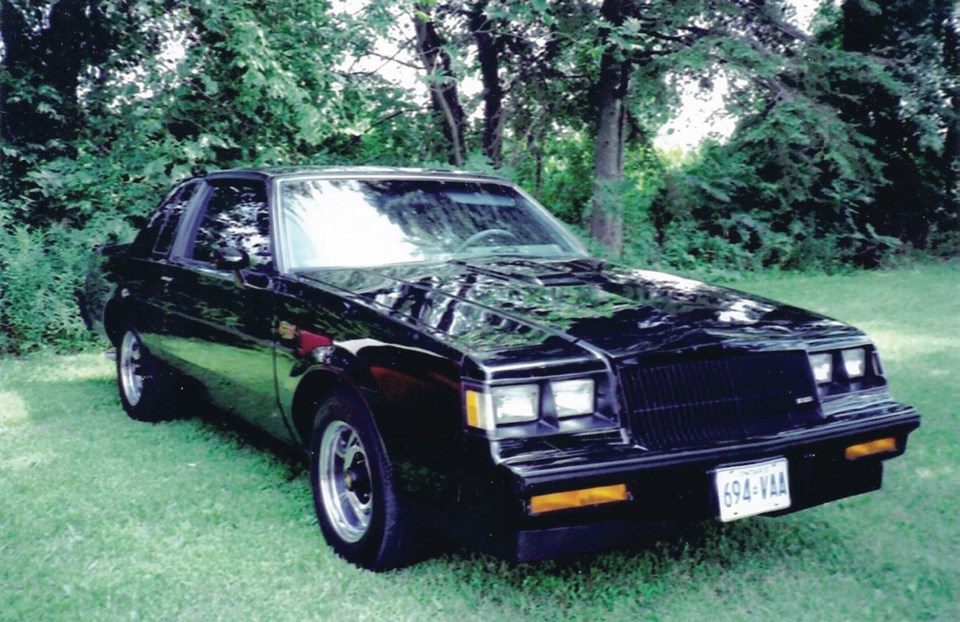When it arrived in 1982, Buick called it the Regal Grand National, but it soon became known simply the Grand National, the name that would establish its persona in the marketplace. The Regal model had been introduced in 1978, the year General Motors returned to turbocharging in its Regal and LeSabre Sport Coupe.
General Motors had pioneered automobile turbocharging in the 1962 Oldsmobile F-85 Jetfire V-8 and flat-six Chevrolet Corvair Monza Spyder. But big V-8s were a simpler route to high performance in those days of cheap gasoline, so the sophistication of the turbo soon left the scene.
Two 1970s energy crises changed that, and while smaller, more economical engines became the norm, drivers still wanted V-8 performance. To satisfy this urge, Buick resurrected turbocharging in 1978 on its well-proved pushrod V-6.
Buick introduced the Regal Grand National in February 1982 at Daytona Beach, Florida, an appropriate venue for a car named after a stock-car racing series. It was clearly meant to capitalize on the Buick Regal’s NASCAR success (albeit powered by Chevy engines).
To lure younger buyers, Buick gave the Grand National Buick a two-tone paint combination of charcoal-grey and silver-grey, accented with red pin striping and “Grand National” lettering on the fenders. It also featured a T-roof and all power equipment. It was an attractive car indeed, but something critical was missing — the performance to go with the name. It was powered by a rather tepid 125-horsepower naturally aspirated 4.1-litre V-6.
Youthful buyers wanted more than fancy paint and slick striping, they wanted power and speed, and here the Grand National fell short. While the big V-6 gave adequate performance, it was far from muscle-car strength. Only 215 1982 Grand Nationals were built, and no 1983s at all. Buick quickly realized that more muscle was needed, so it wisely declared a Grand National hiatus until the appropriate hormones could be found.
The wait wasn’t long. The Buick Grand National, now dressed in menacing black, reappeared for 1984 fitted with Buick’s turbocharged 3.8-litre V-6 pumped up to 200 horsepower. It now had the performance to match its image. Car and Driver reported zero to 100 km/h in 7.5 seconds and a top speed of 195 km/h.
While this was impressive, Buick engineers knew there was more to be had from their old overhead-valve cast-iron six. Behind the radiator, they added an air-to-air intercooler drawing cool air from underneath via ducting. This cooled the temperature and raised the density of the air entering the cylinders, pumping it up to a reported 225 horsepower.
When C&D tested the more muscular Grand Nationals, now rated at 235 horsepower, they reported an astonishing zero-to-100 km/h time of 4.9 seconds. This was faster than any production car available in North America except the Porsche 911 Turbo’s 4.6 seconds. Top speed, although the car was capable of more in spite of crude aerodynamics, was electronically limited to 200 km/h to keep within the maximum rating of its Goodyear Eagle P215/65 R tires.
The Grand National was so fast that C&D’s engineers smelled a rat. They suspected the turbo 3.8 was putting out more than its advertised 235 horsepower, perhaps as high as 290. When questioned about this, Buick engineers more or less admitted that the 235 rating was artificially low, for reasons we can only guess. It might have been to temper insurance rates, or to keep from upstaging the Corvette’s 230 horsepower by too much, or both. Whatever the reason, it was a common Detroit muscle-car ruse.
The final kick of the Grand National was its evolution into the even more outrageous GNX in 1987. It was like the last bright flash of a meteor on its way to burning out. The GNX was rated at 300 horsepower, and Car and Driver reported zero to 100 km/h in 4.7 seconds. Top speed remained controlled at 200 km/h.
This marked the end of the Grand National/GNX. For 1988, the Regal joined the movement to front-wheel drive, relegating the old rear-wheel drive chassis to history. The V-6 engine lived on, however.
The Buick Grand National, built from 1982 to 1987 (except ’83), was an anachronistic throwback to the muscle-car era of the 1960s, a kind of last gasp of those crude high-performance, body-on-frame, rear-wheel-drive machines left over from pre-energy-crisis days. Apart from its sophisticated engine-management technology, the Grand National was pretty much 1960s technology.
Although the Grand National was never made in large numbers, it did revive the spirit, performance and nostalgia of the 1960s muscle-car era.



